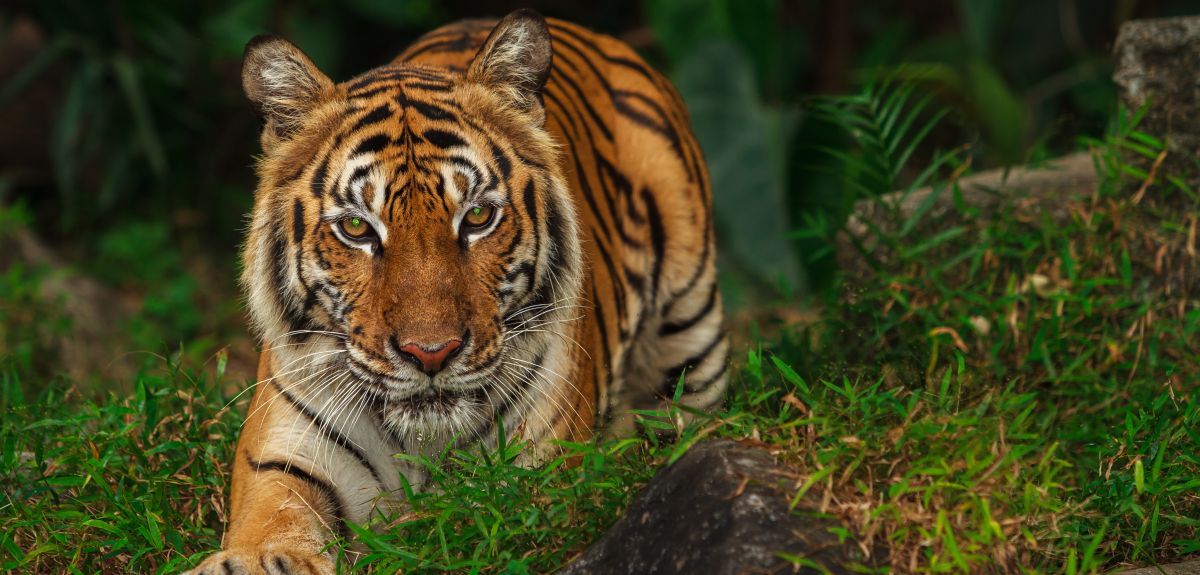
Credit: Shutterstock
New study confirms the importance of tiger population in Thailand Forest Complex
A new scientific survey has reinforced the importance of one of the world’s only remaining breeding populations of Indochinese tigers and provided evidence of tiger cubs in eastern Thailand's Dong Phayayen-Khao Yai Forest Complex.
The study by researchers from the Department of Zoology's WildCRU, published in Biological Conservation, discusses findings first announced in 2017 that the Dong Phayayen-Khao Yai Forest Complex supports a critically important breeding population of tigers.
The researchers provide an estimate of population density of roughly one tiger in an area just under three times the size of Manhattan (0.63 tigers per 100km2). This provides a current baseline against which to monitor their population. Proven breeding in the Forest Complex provides rare hope for tigers in a region where the species is losing ground.
The publication is a joint effort between Thailand’s Department of National Parks, Wildlife and Plant Conservation (DNP), Freeland Foundation, Panthera, the global wild cat conservation organization, and WildCRU.
Their data suggests the region supports a modest tiger density, on a par with some of the most threatened tiger habitats in the world and reinforcing the need for concerted protection and recovery efforts. However, the results demonstrate the species’ remarkable resilience given wildlife poaching and illegal rosewood logging present in the complex – a UNESCO World Heritage Site.
Since an initial survey in 2016, Thailand’s Department of National Parks, Wildlife and Plant Conservation have established the Dong Phayayen-Khao Yai Wildlife Research Station (DPKYWRS) which has led tiger monitoring in landscape under its “DPKY Tiger Recovery Project”. The 10-year project aims to increase tiger numbers by 50% in the complex by 2026. The results lend hope that the project may be on-track. Collaborative surveys from 2018, pooling data from DPKYWRS, Freeland Foundation, and Panthera suggest the population is likely stable, with continued evidence of successful breeding.
These and other results have inspired optimism in recent efforts to ramp up support for protection through investments in ranger training and equipment.
The former head of the DPKY Wildlife Research Station, Dr. Supagit Vinitpornsawan, said: 'Efforts to improve anti-poaching patrols and law enforcement efforts are critical to providing a safe area for tigers to breed. Recent results of our monitoring indicate these efforts may be paying off.'
The paper also investigates the methodology behind wildlife population estimation utilised by other researchers around the world. Researchers utilised computer simulations to investigate and evaluate how different camera-trap placements and survey duration effect population estimates. Results suggest the use of simulations utilised in the paper may be beneficial in designing surveys in other areas in which tiger population density may be low and can help save valuable conservation dollars by optimising placement and survey timings.
The study adds to the body of published knowledge of tigers in Southeast Asia, a region for which there is a critical need for timely and scientifically robust information on present range and remaining source populations.
Today, just 221 Indochinese tigers are estimated to remain in two Asian countries: Thailand and Myanmar. Thailand’s Huai Kha Khaeng Wildlife Sanctuary is home to the largest known population (54-56 individuals) and one of the only other known breeding populations of the subspecies.
Once ranging across much of Asia, scientists now fear that tigers are all but extinct in southern China, Cambodia, Lao PDR, Vietnam and much of Myanmar. Poaching for the illegal wildlife trade stands as the gravest threat to the survival of the tiger, whose numbers in the wild have dwindled from 100,000 a century ago to around 3,900 today.
 New study finds that stopping weight-loss drugs is linked to faster regain than ending diet programmes
New study finds that stopping weight-loss drugs is linked to faster regain than ending diet programmes
 Honorary degree recipients for the Chancellor’s ceremony announced
Honorary degree recipients for the Chancellor’s ceremony announced